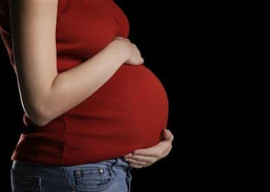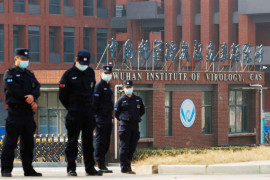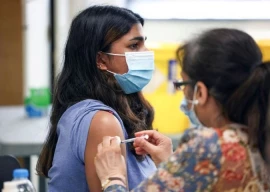
Italy, as other countries, has been struggling to balance the health and economic challenges posed by Covid-19. Controlling the spread of the virus implied restrictions on economic activity, on school and college attendance, and on personal movement. It also had to deal with the economic and social implications of a fall of almost 10% in GDP. This has been hard for a country which, even before the pandemic, was one of the slowest growing economies in Europe, with unemployment, especially among young people in the South of the country, at alarming levels.
So far the government’s main response to the economic crisis has been to try to spend its way out. Support and subsidies to enterprises, as well as to individuals, have been ramped up. Much of this has been funded by borrowing and public debt, already high at 130%, it has shot up to 160% of GDP. The government also placed a moratorium on dismissal and firing of workers until the end of June, and there is talk of extending this even further. The moratorium has kept official unemployment down but it is clear that the numbers of those out of work looks set to increase sharply. Getting the economy going is thus imperative.
Fortunately, over the last couple of months there has been good news with regard to the spread of the virus. The rate of new infections has been dropping, the pressure on hospitals and intensive care units has eased, and Covid-related death rates have been falling. At the same time, vaccination programmes have been moving ahead. These trends led to a decision by the government to start on a gradual easing of restrictions. As of April 26, students were allowed to return to schools, colleges and universities; theatres, cinemas and museums were allowed to have visitors; and restaurants and bars were allowed to stay open in the evening, provided they had tables in the open air. In addition, a timetable for further easing of restrictions was announced, with a special focus on facilitating tourism in the critical summer period.
However, as many epidemiologists were quick to point out, the government’s moves may prove premature. Death rates remain significant, much higher than last summer before the second wave hit. Vaccinations are proceeding with 26 million doses administered so far but only about nine million Italians, out of a total population of 60 million (15% of the population), has had the required two doses.
Moreover, there are dangerous new variants lurking in the wings — most worryingly is the B.1.617.2 mutation (the so-called Indian variant). The government has placed tight restrictions on those travelling back from South Asia asking some of them to quarantine in special Covid hotels. However, there are large communities of Indians, Pakistanis and Bangladeshis in Italy. Many of these people live in crowded, ghetto-like, conditions, ideal for the spread of the virus. There have already been some cases of the Indian variant near Rome and the government has imposed strict lockdowns in these areas. But it remains a very worrisome situation.
In announcing the reopening measure, the prime minister said that the government was taking a “calculated risk”. Several leading medical experts were quick to respond that the calculations were done badly and failed to adequately assess costs and benefits.
The outcome of the recent measures will play out in the coming months. The country may plunge back into the pandemic or else move rapidly towards normalisation. However, the so called normalisation may only be a superficial phenomenon. The pandemic has created, or often exacerbated, several deeper changes in Italian society. The country will have to struggle with these for several years.
The pandemic and the lockdowns are creating a growing unease among the population, especially among younger people. There are strident calls for “Liberty” and this often translates into a strong unwillingness to follow government SOPs. Despite continuous warnings by authorities, many people simply do not maintain social distancing, do not wear face masks, and gather in large groups especially on Friday and Saturday nights.
The feeling of oppression, a mistrust of authority, and a search for alternative realties are not new phenomena. However, the pandemic has sharply split society between those who see government, science and rules as things for the common good; and those who feel alienated and are constantly searching for conspiracy theories to justify their actions.
The pandemic has also very sharply increased income and wealth inequality, and this has stoked feelings of helplessness and a lack of optimism in the future. One of the consequences of this was a sharp fall in marriages, an increase in divorces, and, most worryingly, an unwillingness to have children. In 2020, the birth rate, already low and lagging behind the death rate, reached its lowest level ever — around 400,000 a fertility rate of only 1.24 — well below the number of deaths (750,000). In a recent speech that touched on this issue, Pope Francis called it a “demographic winter, cold and dark”.
The pandemic has seen the significant faltering of traditional politics and leadership. The political parties have been continuously bickering. After several rather odd coalitions between the strangest of bedfellows, the president had to ask a non-politician (the former head of the Italian and European Central Banks to take over as prime minister. The traditional institutions failed even to manage the vaccination campaign and a uniformed serving general, sometimes referred to as the TV general due to his frequent public appearance, was placed in charge of the campaign.
The populist parties, some of which are part of the ruling coalition, continue to fan social and economic tensions and rail against restrictions. For example, when the government confirmed continuation of the 10 pm curfew, one of the ministers made a statement that no one would be fined if they were out after 10 pm — provided they could show that they were at a restaurant, returning from work, or a host of other reasons. All of this made a mockery of the curfew as the police and other authorities have confused about what action they are expected to take.
The political tensions are likely to rise in the coming months. The parliament has approved a Recovery and Resilience Plan in the amount of almost €250 billion — more than Pakistan’s annual GDP for a country less than 30% of its size — to be spent in the next five to six years. Of this amount, the bulk will come from EU funds and is conditional on a series of deep reforms. Many of these reforms have been in the programme of several governments but never got implemented due to lack of political will and various entrenched vested interests.
In the past year the country has faced an agonising period. Recovery now hinges on how things move forward. It will be hard but I remain optimistic.
Published in The Express Tribune, June 8th, 2021.
Like Opinion & Editorial on Facebook, follow @ETOpEd on Twitter to receive all updates on all our daily pieces.



1719660634-1/BeFunky-collage-nicole-(1)1719660634-1-165x106.webp)

1732276540-0/kim-(10)1732276540-0-165x106.webp)










COMMENTS
Comments are moderated and generally will be posted if they are on-topic and not abusive.
For more information, please see our Comments FAQ